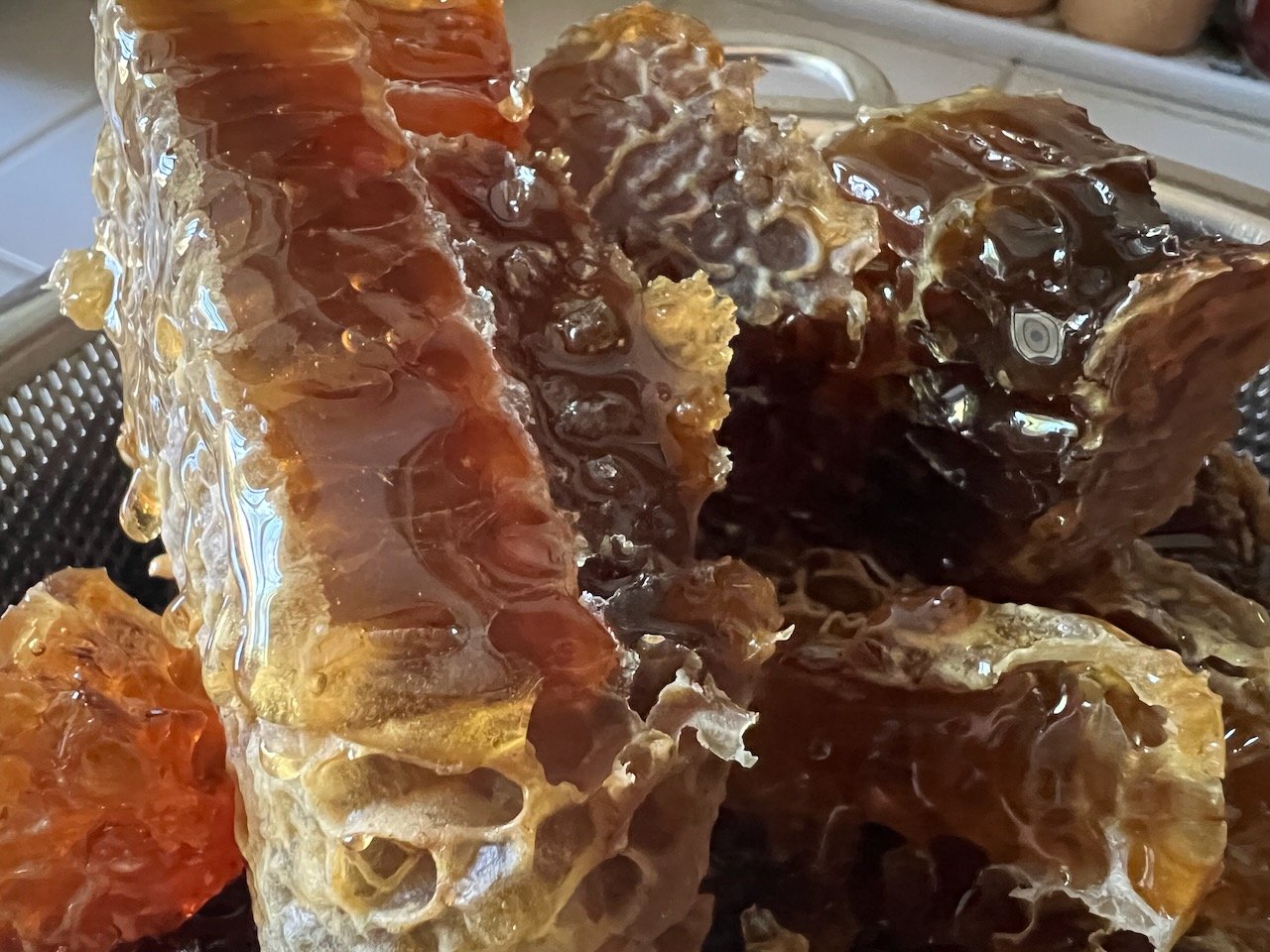It’s about 80 degrees at Poppy Corners, and it’s that exact time when, every April, we say to ourselves, “Is the neighborhood pool open yet?” The season of flip flops and tank tops signals also that it’s time to do some much-needed maintenance at home. Tom and I always keep a running list, inspired by Monty Don and Gardener’s World, called ‘jobs for the weekend.’ We add to it all week and then begin to tackle it as soon as we’ve finished our coffee Saturday morning. Our list this week was literally as long as my forearm - typical for this time of year.
Luckily, I’ve already planted most of our summer veg, which I normally wouldn’t do until the temp is consistently over 50 degrees at night. But I’m scheduled to have knee surgery on May 8, so I thought it would be good to get all that done before then, and luckily everything has survived. Since we removed all the raised beds from the North Garden (to make the orchard), I used that wood to make the raised beds in the South Garden taller. We’re not getting any younger around here and taller beds will be helpful in that regard. I ordered three cubic yards of planting mix from a local nursery, and added that to the beds before planting. It’s good to have all that done.
But today, the first thing on our list was the irrigation system. Now that we’ve had the last of our (prodigious!) winter storms, it’s time to begin a regular irrigation schedule. It’s important to start out with 100% saturation in your soil; if you do that, you’ll just be topping it off every time you water, instead of playing catch-up. But the irrigation system hasn’t been used all winter, so it’s not as simple as just turning it on. Inevitably there will be some problems - breaches in the lines, clogged drips, broken micro-sprayers. Tom and I turn on one ‘zone’ at a time and go around watching what happens and making notes. Often, I’ll see an area that needs coverage, and we’ll add some lines. Sometimes an area is too wet and we’ll adjust that too. Tom always has a lot of repair work to do. It’s really good to get all that done before irrigation becomes crucial.
Can you see the swarm?
After that, Tom opened our top-bar bee hive. Two days ago, I was out running errands when I got texts from two different neighbors: “Your bees are swarming!” So I rushed home in order not to miss it and to see if I could capture it for my dad, who always wants our swarms. Alas, it was too high to reach with our ladder. I’m not even sure if they were our bees (there are many beekeepers in the neighborhood), but it was a good reminder to spend some time looking through the hive and adding bars for new brood and honey. Everything looked as it should, and Tom took a full bar of honey out for us. Opening the hive is now Tom’s job since I’ve become allergic over time; he’s gotten really good at it and never gets stung anymore. I hang back and look on longingly, peppering him with questions which I’m sure he just loves. At least I can handle the messy job of cutting up the comb and extracting the honey, though gravity does most of the work.
I also spent a good deal of time today cleaning out our enormous passionvine. It’s a Passiflora ‘Blue Horizon,’ and has gorgeous flowers and small black sour fruits. It supports a huge number of gulf fritillary butterflies every year, and is a stopping place for every curious neighborhood child in summer. I bought it as a living deer fence, assuming that it would die back every winter with our frosts (and therefore remain manageable). It’s never done that, only gotten more and more enormous each year. It’s extremely promiscuous and shows up in all sorts of places I don’t want it to, so I’m always pruning the thing. However this year, we had so many nights of truly cold weather that the vine died back, leaving a hedge of dead leaves and flowers a foot thick. That was fun to hack through and remove. Now it looks quite bare, with just foundation vines on the trellis, but it won’t be long before that monster puts out new growth and begins the cycle all over again.
Tomorrow, we plan to wash the windows and screens, a once-a-year job that we loathe but that always makes such a difference in the way the light comes in our windows, so is totally worth it.
We also have reserved time for hiking both days. After all this rain, the hills are simply covered in wildflowers. This morning, we walked up to Shell Ridge where a guy named Phil (a volunteer with the Walnut Creek Open Space) has been working for ten years to restore a giant hillside with native flowers. This year it is simply spectacular, with every kind of California native annual you can imagine. Below you can see a very small section of the hillside, covered with poppies and chia. Tomorrow, I’m hoping we will have time to go a little further afield and hike in a place where we can ford some streams, which never gets old in our normally-arid Bay Area, and see nature-planted flowers.







